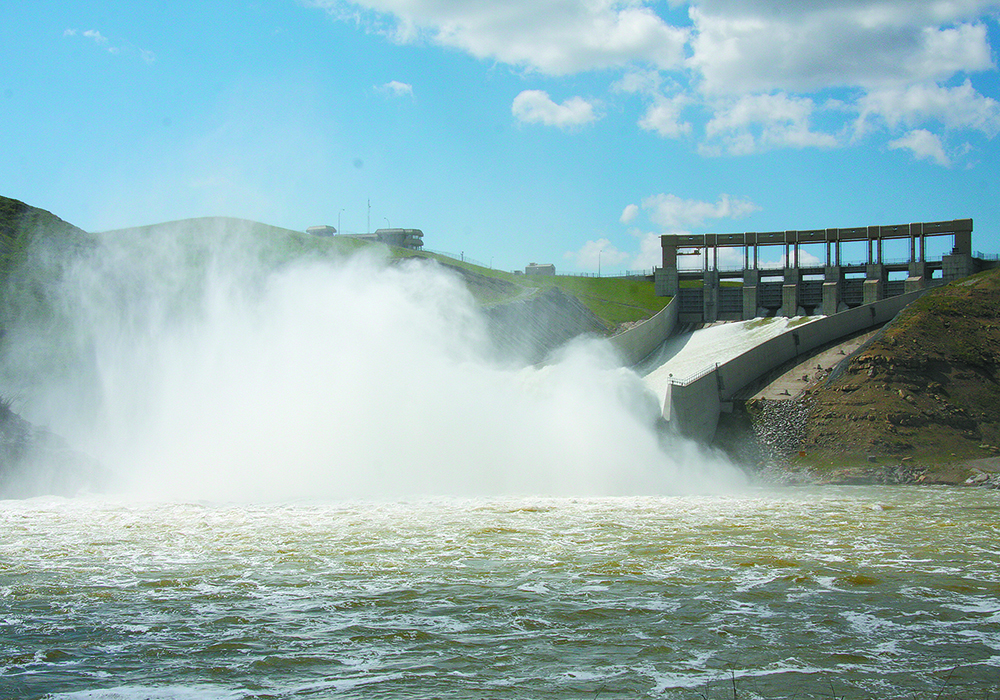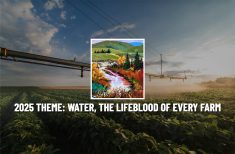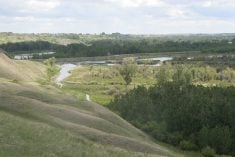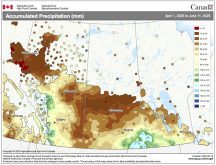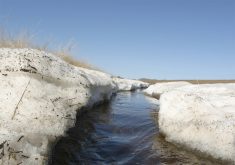The Canada Water Agency might be a new national institution, but it embodies an old soul well known and loved by western Canadian farmers, says one of its federal government champions.
“We’ve taken the spirit from the Prairie Farm Rehabilitation Administration,” said Terry Duguid, the Winnipeg MP and parliamentary secretary for the environment minister.
“It’s taking that spirit and expanding it to the entire country.”
The Canada Water Agency was created in the Liberal government’s 2023 budget. It will report directly to the environment minister, rather than be inside the department itself, similar to the way Parks Canada operates.
Read Also

Huge Black Sea flax crop to provide stiff competition
Russia and Kazakhstan harvested huge flax crops and will be providing stiff competition in China and the EU.
It is not a regulatory agency, but will instead focus on co-ordinating research and water management efforts between many actors, something that has often been a challenge.
“Watersheds don’t respect boundaries,” said Duguid.
“Fresh-water protection and management is very fragmented. We have federal, provincial, territorial, Indigenous, municipal jurisdictions, 26 federal departments that touch fresh water, a myriad of stakeholders including the agriculture community, the farming community, and there is very little co-ordination.”
The PFRA used a national focus and federal money to offer pragmatic solutions for chronic challenges faced by prairie farmers coping with the harsh environment of Western Canada. The water agency hopes to bring a similar focus to national water management issues.
Duguid said lower levels of government have been keen to see the birth of the agency to make sure they get the most from their own water management spending, and also because the federal budget contained lots of new funding for water management projects.
Although about two-thirds of the $650 million announced will be directed towards the Great Lakes, more than $200 million will be spent on water management in other watersheds, mostly in Western Canada.
Water is often a divisive issue within provinces and between provinces, states and regions. Upstream and downstream interests are often involved in tense management situations.
Farmers are often on both sides of disputes. One farmer’s good drainage can become a downstream farmer’s flood. Water polluted by mining, the oil industry and urban sewage can impact farmers’ ability to operate, while some downstream interests blame farmers for water pollution and nitrification of water bodies like Lake Winnipeg.
Droughts have devastated many years of western farming. So have floods.
In recent years, water management in provinces like Manitoba has evolved into a watershed approach, fitting management to the flow of the water rather than to human-based boundaries. The Red River Basin Commission has long connected the various parties in that watershed, with “three states, one province, two countries and one Red River basin.” The Assiniboine River Basin Commission works similarly along that watershed.
But the new water agency will attempt to “use the federal government’s convening power to bring people together to do that watershed planning” and extend those efforts more widely, Duguid said.




